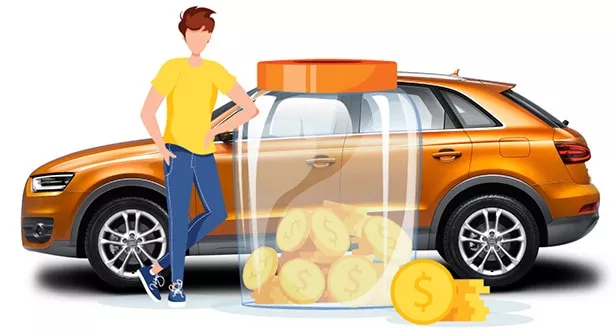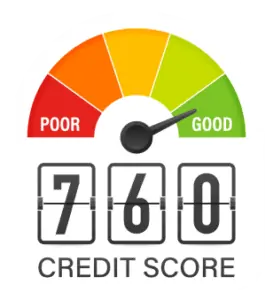Car Finance Explained
The Comprehensive Guide

How Car Finance Actually Works
“Finance.” – A word that conjures images of complicated numbers, calculations, pitfalls and fees. But is it really that complicated?
Let’s take a look.
So you need a new car and you haven’t enough money in the bank to buy it outright. Relax, you’re not alone. 1.49 million people bought a car with a finance deal in 2020.
But what does it all mean and what’s right for you? In this article we’re going to dig deep and simplify the jargon – and it’s not as complicated as you might think.
By the time we’re finished you’ll have a better idea of what deal will suit you best.
There are basically 4 main options for car finance in the UK. Let’s start by sketching out these options and breaking them down into the simplest terms.
PCP – This is the one you’ll hear about most often. It’s basically a loan, just like any other, but you don’t borrow the full cost of the car – just part of it. After 3 – 5 years you have 3 options: You can pay a lump sum to keep the car, swap it for another or simply hand it back.
Hire Purchase – Pay a deposit and then pay off the full value of the car over a period of time. You always end up with a car if you keep up repayments but the car isn’t officially yours until you’ve paid it off.
Personal Loan – Go to your bank or any lender and borrow the money you need. Hand that money to the car dealership or seller, buy the car and the jobs a good ‘un. Just pay back the loan as you would any other.
Lease – Essentially, you’re hiring the car for a set period but you don’t get to keep it when your time is up: you have to hand it back. A favoured choice for fleet buyers and businesses, leasing is becoming increasingly popular for private buyers.

So that’s what the options are but which is best suited to you? Well, that depends on who you are – there is no “one size fits all”.
There are a few basic truths, however:
Buying a car outright from your savings will always work out as the cheapest option as you’ll have no interest to add to the cost. But what if that’s not an option?
PCP deals and Leases generally result in the lowest monthly payment – making both great options if you’re budgeting month-by-month. Of the two, Leasing generally works out cheaper over a few years but you don’t end up with the car at the end: the dealership does. No car for you.
Your cheapest way to finance a car is to take out a loan, which usually works out cheaper by the time you’ve finished paying it back. You’ll also own the car straight away. But the monthly repayments will be higher than other options – not great if your income is tight every month.
Hire Purchase is a very quick and simple option but, as you’re borrowing against the entire cost of the car, it’s not the cheapest per month. Or, indeed, the cheapest overall.
 Clearer? Good.
Clearer? Good.
How Interest Works in the World of Car Finance.
What’s your interest in Interest?
Most people would say that they don’t really understand it. Are you one of them?
Let’s turn that around.
Now we’re not going to tell you that Interest is the most fascinating subject in the world. But getting the very best deal from your lender depends on you knowing more than they taught you at high school. Which wasn’t much.
First of all, there are three letters you really need to understand if you’re going to get the best car finance deal: APR.
You’ll have seen and heard those letters in every loan ad on every Billboard, TV and stupidly-quick radio spot.
But do you know what it means?
Let’s get the dullest bit out of the way first:
APR stands for Annual Percentage Rate.
Any the wiser? No. Let’s clear it up.
What is APR?
The easiest explanation is this: it’s a single number that expresses all the charges you’ll pay when financing your new car – including the Interest and any additional fees.
Why Use APR?
It’s the simplest, most standardised way there is to allow you to compare the deals you’ll be offered. All lenders use APR.
How simple is simple?
The higher the number, the more you’re going to pay for your car finance – or any loan. The lower the number, the better the deal.
Come On,.. Is it really that simple?
Yes and no.
While the APR on an advert is a good way to tell which deal to go for, it’s not the end of the story.
Turns out there’s more than one kind of APR
The APR on the ad is “Representative”. It’s what the lender usually offers 51%+ of their customers. The other 49% could get a larger or smaller number. Why? Because everyone is different.
It’s not that the lender is trying to be sneaky or unfair – they’re trying to give you their best guess. But they understand that no two customers have the exact same circumstances or risk.
Put simply: the riskier you are to lend to, the higher the APR your lender or dealership will place on your Car Finance. And the higher the deposit you place on your car, the lower that APR number will be.
Remember, the higher the number, the more you’re going to be paying back.
The lower your APR, the cheaper your finance will be.
So while the APR on the ad will help you to choose your lender and your deal, don’t imagine that it’ll be exactly what you’ll spend. Always get the best quote you can first.
Your APR can have a huge impact on the amount you spend on your car.
If you finance a £24000 car at 5% APR you could pay £1851 in interest and charges over 3 years. Bump that to 8% – same car at the same price, remember – and you’re now paying £2963 for that 3 year finance.
How? Well the calculations could give you a permanent frown of confusion. All you need to know is: look for the lowest APR and put yourself into the best place to get it – either by placing a bigger deposit or by improving your credit score.
Whatever you’re looking for we can help you to get the best deal. Want to know more, visit ChooseMyCar now to see how we can help.

Car Finance Calculations Explained.
Who likes big numbers? No?
We’re not big fans either. But car brokers, lenders and dealerships are pretty attached to them.
Do you need to know them? Let’s look at this one:
APR = ((Fees+Interest/Days in your loan term) x 365) x 100.
Don’t be confused by it. In fact don’t think about that calculation at all – it’ll just give you a headache.
All you need to know is:
- APR is a number that combines the interest you pay for your finance with any fees your provider adds to it.
- The Higher the APR on your car finance, the More you’ll pay back. The Lower the APR, the Less you pay back.
The calculations behind interest and fees change and adapt from lender to lender. Keeping an eye on all those sums is like climbing uphill on roller skates: it’s all a bit pointless.
This is why APR was created in the first place; to simplify it all into a single, comparable number.
If you’re really interested, the calculation of how much you pay on top of your repayments every month looks something like this:
Take the APR and divide it by 12 to get the percentage of interest they add every month. Take the overall amount you have left to pay on your Car Finance, take the monthly percentage of that number and add it to your finance deal that month.
An example, you say? Here goes:
Let’s say that James needs a van to transport lilies for his flower shop. He’s found a great deal on a second hand Transit for £14000 at an APR of 6% for a 3 year loan. So his first payment looks like this:
£14000 / 36 months = about £389.
The APR on his first payment will be 6% APR / 12 = 0.5%.
0.5% of £14000 is £70. So James may pay back £389 but the lender has added £70 to that loan in the first month.
The amount that James has actually paid back is £319 (£389 – £70). As James pays off more of the loan, the added interest gets smaller. Because of this, James will pay off the loan quicker and quicker over time.

The opposite is also true: fantastic Credit Score? Lower APR.
The deposit you place on your car upfront also makes a huge difference. The bigger your deposit, the less money they’re lending you, the less risk they’re taking and the lower your APR.
They can’t put all of this in their ad.
It’s not the simplest business but there are ways to get a better APR, a better deal and a cheaper car. We’re always happy to help.




